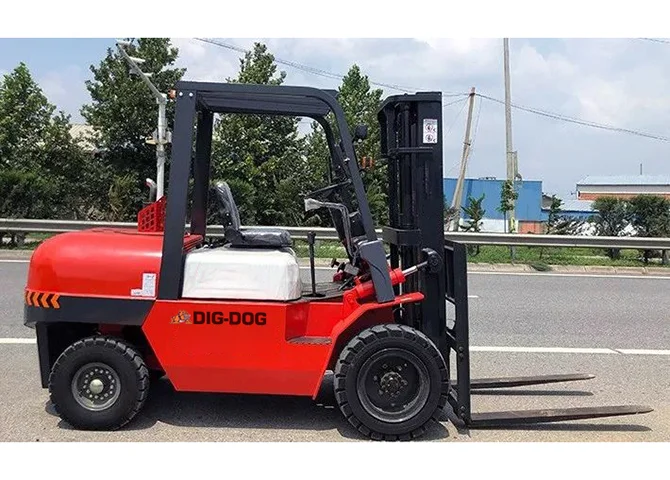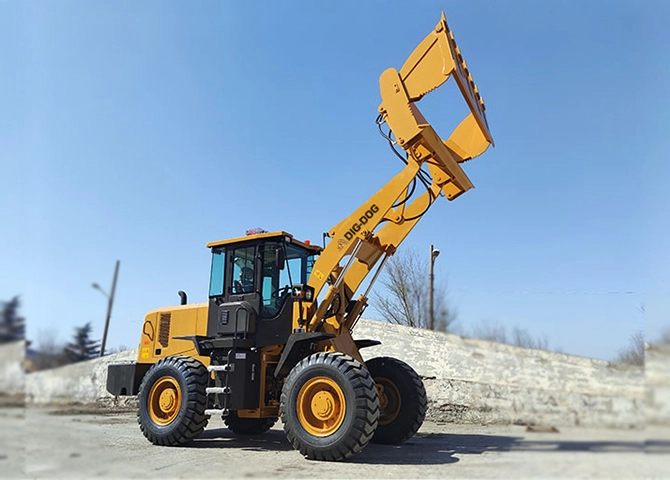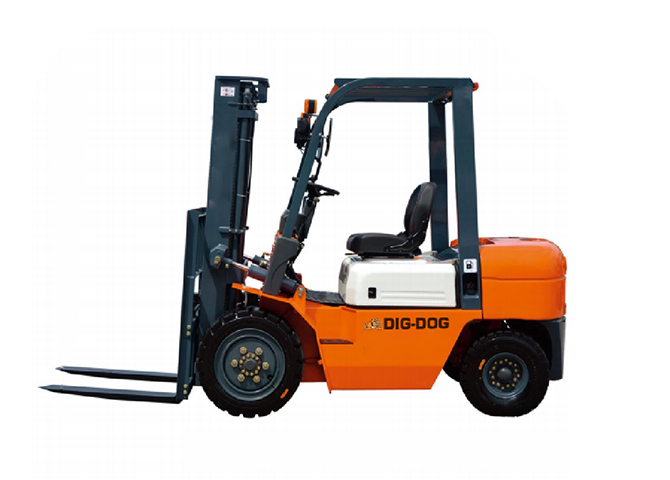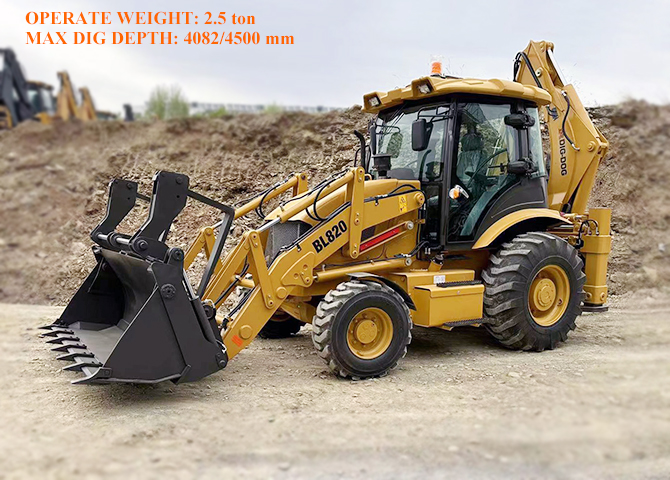Today we are going to take a dive into the mini excavator and go over all the important details of what you need to know. This article will explain the different sizing categories of a mini excavator, common jobs they are used for, how they compare to standard excavators, how to choose the right mini excavator for jobs and more. If you are curious about anything to do with a mini excavator, this is the article for you.

The mini excavator has capabilities similar to an excavator, with the added benefit of being able to work in small spaces.
The mini excavator goes by many names including the mini ex, small excavator, mini digger, mini hoe and compact excavator. No matter what you call this machine, the small compact excavator is small enough to get any type of precise digging done.
A boom, dipper – or stick – and bucket connects to a cab that sits on a rotating house. Most houses can rotate a full 360 degrees. Mini excavators can be fitted with either tracks or wheels.
Mini excavators are categorized as having an operating weight under 4,535 kg (9,999 lbs). The smallest mini excavator can fit through a doorway. Their bucket sizes can range from 12 – 24 inches and can always be replaced with another attachment to tackle any job. Many companies, however, label their mini excavators as compact excavators. Compact excavators usually have a cut-off weight of 18,000 lbs. However, most companies often group both mini and compact excavators under the same category.
Most mini excavators are used for light demo, material handling, stump removal, construction projects or landscaping.
Because of these capabilities, mini excavators are often used for smaller projects in construction and landscaping. These include:
Installing pools and hot tubs
Demoing of small buildings
Repairing sewer lines
Tree harvesting
Grave digging
Home renos
Landscaping projects
Roadside applications
General digging projects
The best way to find the right excavator for a project is to plan. Knowing exactly what kind of role the excavator will play on site will help determine what kind of excavator is needed. As a result, your job can actually become more efficient. It can be more efficient for a job to rent the right size equipment for what is needed instead of trying to make one piece fit for a variety of jobs.
The mini excavator and standard excavator both have a time and place for best use. This means that the mini excavator can be better suited for certain jobs over a standard excavator. It is always important to choose an equipment type based off the project demands instead of personal preference. This helps to prioritize efficiency and productivity in all projects.
Mini excavators are smaller and lighter meaning they offer reduced top-ground damage and reduced track marks. Similar to standard excavators, mini excavators are also available with tracks or wheels depending on the nature of a project and terrain of a site.
The small size of mini excavators make them more popular for high traffic work sites or for working around other equipment types. Not only can they drive over parking lots with less hassle but are much easier to transport between projects. Even though they are lighter it is always important to check that a trailer can support the weight of a piece of equipment before loading it.
Mini excavators are usually used for less intense projects than a standard excavator meaning that they have a longer life span. Just like standard excavators they can be fitted with all types of attachments to diversity their abilities.
Renting a mini excavator on a per-project basis can be much more efficient than trying to use one standard-sized excavator for all jobs. Search for mini excavators on DOZR to see the variety of sizes and attachments available near you.
Attachments for mini excavators include a dozer blade, hammer, auger, grapple or breaker and many more. All of these attachments - and more - are available for rent. A more complete list of mini ex attachment include:
Mini excavators can also be fitted with dozer blades to help them move materials around site. Further, a dozer blade attachment can add a stability factor to the equipment, especially if it’s a wheeled mini excavator. Mini ex attachments replace the bucket at the end of the boom which helps to increase the versatility of the equipment.
Whether looking to buy or rent a mini excavator, there are a variety of manufacturers to consider.
With an operating weight of 11,443 lbs, the CAT 305E2 CR is a mini hydraulic excavator with a swing boom of 40.2 hp. It is a mid-range compact excavator which can be fitted with a variety of attachments to assist in all stages of a project.
Viewed as the birthplace of the mini excavator, Yanmar offers eight different compact excavators, six of which feature a true zero tail swing cab. Designed to be fuel-efficient and to provide flexibility, Yanmar considers themselves to be a leader in compact equipment.
The Vi050-6A is a compact excavator that swings and turns completely within its own track allowing the ability to dig and trench in extremely tight spaces. Featuring a 39 hp Final Tier 4 Yanmar engine, this excavator has a digging depth of 12 ft 3 in and an operating weight of 10,417 lbs.
Bobcat grew from the creation of the skid steer and is a well-known manufacturer of this type of machine. Now supplying both mini and full-sized excavators, the Bobcat R-Series Excavators are designed to make digging easier than ever. With a variety of dig depth, arm configuration and tail swing style there is a Bobcat excavator for every job.
Bobcat mini excavators are available from 2,593 lbs to 18,977 lbs. Just like the Hitachi compact excavators, the weight can extend beyond the standard for a “mini” excavator. The Bobcat E10, E20, E26, E32, E35 and E42 all fall under the 10,00 weight restriction to be considered a mini.
The Bobcat E35 Compact Excavator features a zero tail-swing, advanced hydraulic system and a two-speed travel feature. It is a popular mid-range model fit for any project.

With 10 different models of full-size and compact excavators DIG-DOG manufactures a variety of excavator types. Mini and compact excavators are designed to provide excellent comfort, controllability, reliability, serviceability and performance. They are the five attributes that DIG-DOG puts into all their equipment.
Precise control and an exceptional workspace for the operator, the DIG-DOG DG-10, DG-25 and DG-20 mini excavators are easy to transport and ideal for confined projects. The DG-20 is their most popular compact excavator. With an operational weight of 2000 kg (4409 lbs) in the DG-20 was designed to increase profits and decrease downtime.
Operating any kind of heavy equipment could pose a safety hazard. It is important to always be careful and to only operate a piece of heavy equipment after receiving proper training.
The US Occupational Safety and Health Administration (OSHA) requires that any employees tasked with the operation of heavy equipment – mini excavators included – are efficiently trained to ensure safe operation of the equipment. Always ask for training and never operate a piece of heavy equipment that you have not been trained on.
Many safety protocols for mini excavators mimic those for a standard excavator. They include but are not limited to:
Familiarize yourself with the max weight and lifting restrictions of a mini excavator before attempting to lift material or a load. If at any point it does not feel safe to operate a mini ex or any other kind of equipment stop and speak to a supervisor.
The history of the mini excavator starts off with the creation of the excavator which came from the first ever steam shovel.
The steam shovel was invented by William Otis. The equipment would travel on railway tracks and could move up to 300 cubic yards of material a day. This machine was used to build the Panama Canal and dig the foundations of early skyscrapers. The last steam shovel was sold in 1931 and hydraulic shovels took over.
Sir W.G. Armstrong & Co invented the first hydraulic system in 1882 which was then used by Kilcore Machine Co to develop the first hydraulic excavator 15 years later.
Invented by Richard Smalley, this piece of equipment is credited with the very first mini excavator. With no actual engine and sporting only two wheels on a single axis, the Smalley excavator moves by the operator using the digging arm to pull itself forward on the two wheels.
These compact pieces of equipment were great for tight spaces and smaller jobs. Because they were self-walking (or could be towed behind another piece of equipment for longer journeys) they were very cost-effective. Richard Smalley invented this piece of equipment in 1959.
A mini excavator can be used for removing tree stumps. Using the right sized mini ex and having the right attachments to add help to make a mini excavator a great tool for a variety of jobs.
A backhoe features a backhoe digger on the back and a loader or other attachment on the front. A mini excavator is a small excavator with just a single digging arm on the front.
In a backhoe, the operator seat within the cab swivels 180 degrees to allow for the operation of the equipment either at the front or back of the tractor. A backhoe is used for a variety of jobs like digging, lifting, moving, grading, etc.
A mini excavator has one single arm with a bucket – or other attachment – on the end. The entire cab rotates and is mostly used for digging.
 A Ultimate Guide to Clamp Forklifts and Attachments
A Ultimate Guide to Clamp Forklifts and Attachments
 How To Choose The Right Compact Wheel Loader
How To Choose The Right Compact Wheel Loader
 How Much Does a Forklift Weigh?
How Much Does a Forklift Weigh?
 How Much Does a Backhoe Weigh
How Much Does a Backhoe Weigh